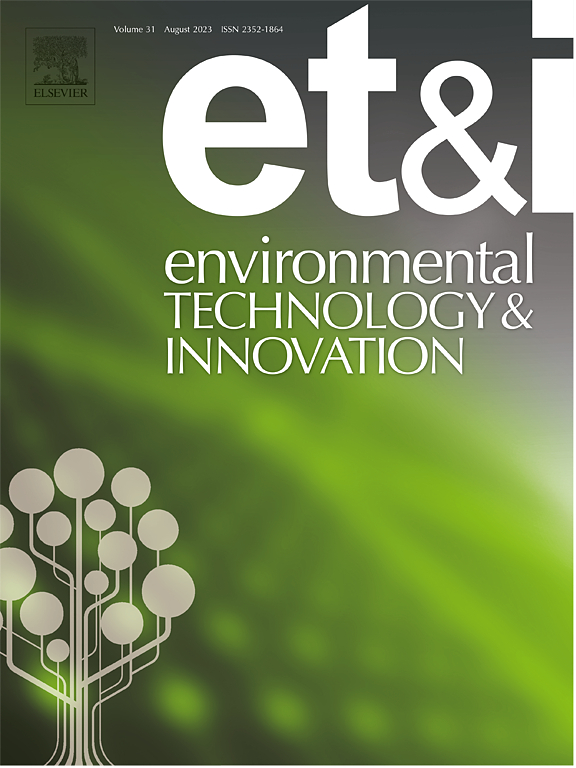回收玉米秸秆作为去除废水中重金属的有效生物吸附剂:吸附性能及机理研究
IF 6.7
2区 环境科学与生态学
Q1 BIOTECHNOLOGY & APPLIED MICROBIOLOGY
引用次数: 0
摘要
以玉米秸秆为原料成功制备了delta功能化玉米秸秆纤维素(DCC)生物吸附剂,并应用于废水中Cu2 +、Pb2+和Zn2+的同时去除。与玉米秸秆纤维素相比,DCC含有丰富的氨基,具有更大的比表面积和更高的化学极性。通过批处理实验,优化了pH值、接触时间和初始浓度等吸附参数。吸附数据更符合拟二级动力学模型和Langmuir等温线模型,对Cu2+、Pb2+和Zn2+的吸附量分别为59.10、68.92和60.79 mg/g。FT-IR和XPS结果表明,DCC表面的含o和含n基团通过与多配体形成螯合络合物对重金属的吸附起着重要作用。经过5次循环后,DCC生物吸附剂表现出良好的再生性能。研究结果表明,DCC生物吸附剂对废水中重金属的去除具有良好的效果,并为玉米秸秆的资源化提供了一种“以废代废”的替代策略。本文章由计算机程序翻译,如有差异,请以英文原文为准。
Recycling corn stalks as an effective biosorbent for heavy metal removal from wastewater: Investigation on the adsorption performance and mechanism
DETA-functionalized corn stalk cellulose (DCC) biosorbent was successfully prepared from corn stalks and applied to simultaneously remove Cu2 +, Pb2+ and Zn2+ from wastewater. Compared with raw corn stalk cellulose, DCC was rich in amino groups and was characterized with larger specific surface area as well as higher chemical polarity. Batch experiments were carried out to optimize the adsorption parameters including the pH value, contact time and initial concentration. The adsorption data followed the pseudo-second-order kinetics model and Langmuir isotherm model better, and the adsorption amount for Cu2+, Pb2+ and Zn2+ in ternary system were 59.10, 68.92 and 60.79 mg/g, respectively. FT-IR and XPS results revealed that the O-containing and N-containing groups on DCC surface played a prominent role in heavy metal adsorption by forming chelating complex with multiligand. Additionally, the DCC biosorbent presented good regeneration performance after 5 cycles. The findings in this paper revealed the DCC biosorbent had promising efficiency in heavy metal removal from effluents, and also offered an alternative strategy to recycle corn stalks for the purpose of ‘waste treatment by waste’.
求助全文
通过发布文献求助,成功后即可免费获取论文全文。
去求助
来源期刊

Environmental Technology & Innovation
Environmental Science-General Environmental Science
CiteScore
14.00
自引率
4.20%
发文量
435
审稿时长
74 days
期刊介绍:
Environmental Technology & Innovation adopts a challenge-oriented approach to solutions by integrating natural sciences to promote a sustainable future. The journal aims to foster the creation and development of innovative products, technologies, and ideas that enhance the environment, with impacts across soil, air, water, and food in rural and urban areas.
As a platform for disseminating scientific evidence for environmental protection and sustainable development, the journal emphasizes fundamental science, methodologies, tools, techniques, and policy considerations. It emphasizes the importance of science and technology in environmental benefits, including smarter, cleaner technologies for environmental protection, more efficient resource processing methods, and the evidence supporting their effectiveness.
 求助内容:
求助内容: 应助结果提醒方式:
应助结果提醒方式:


